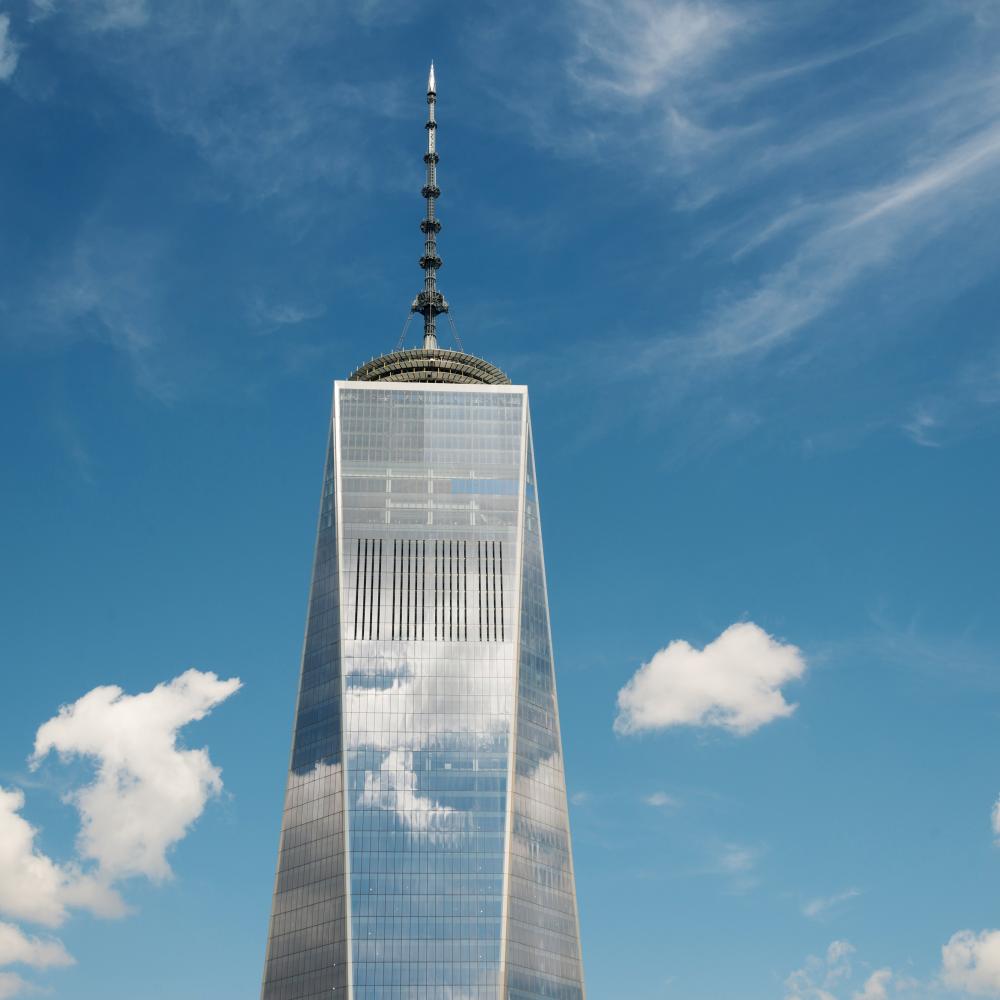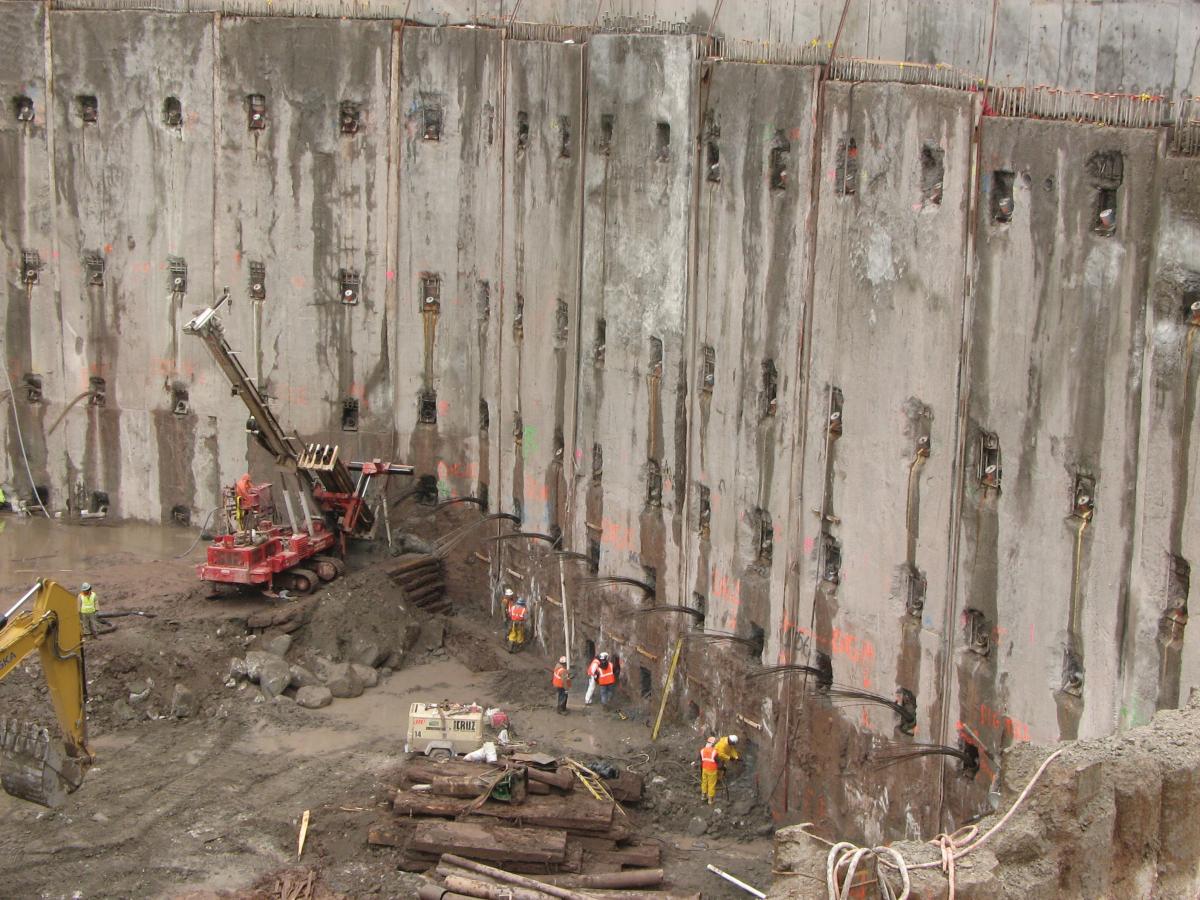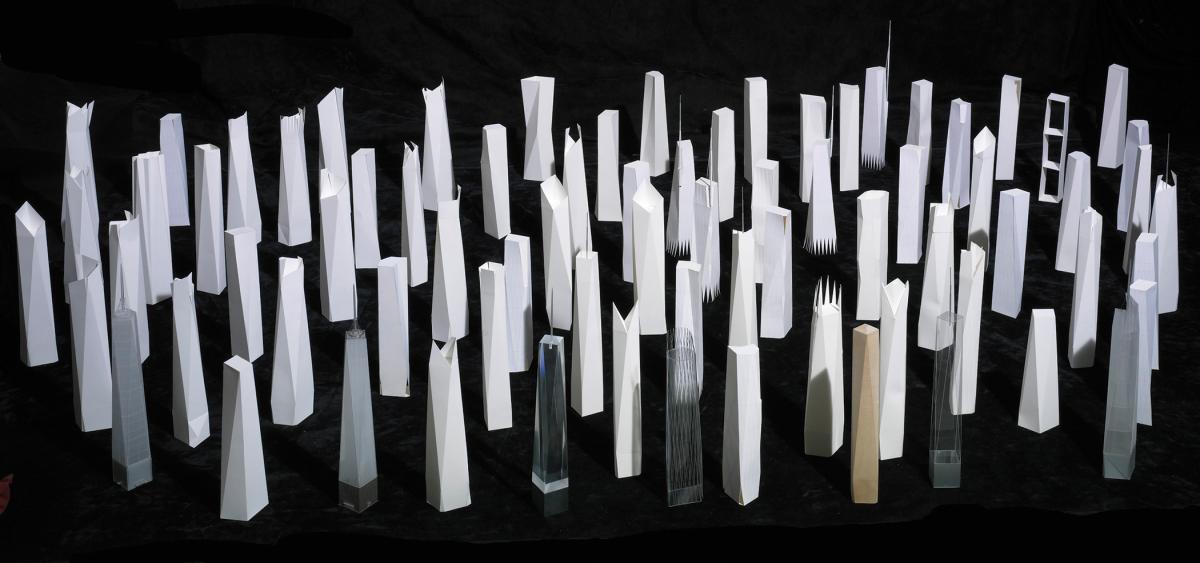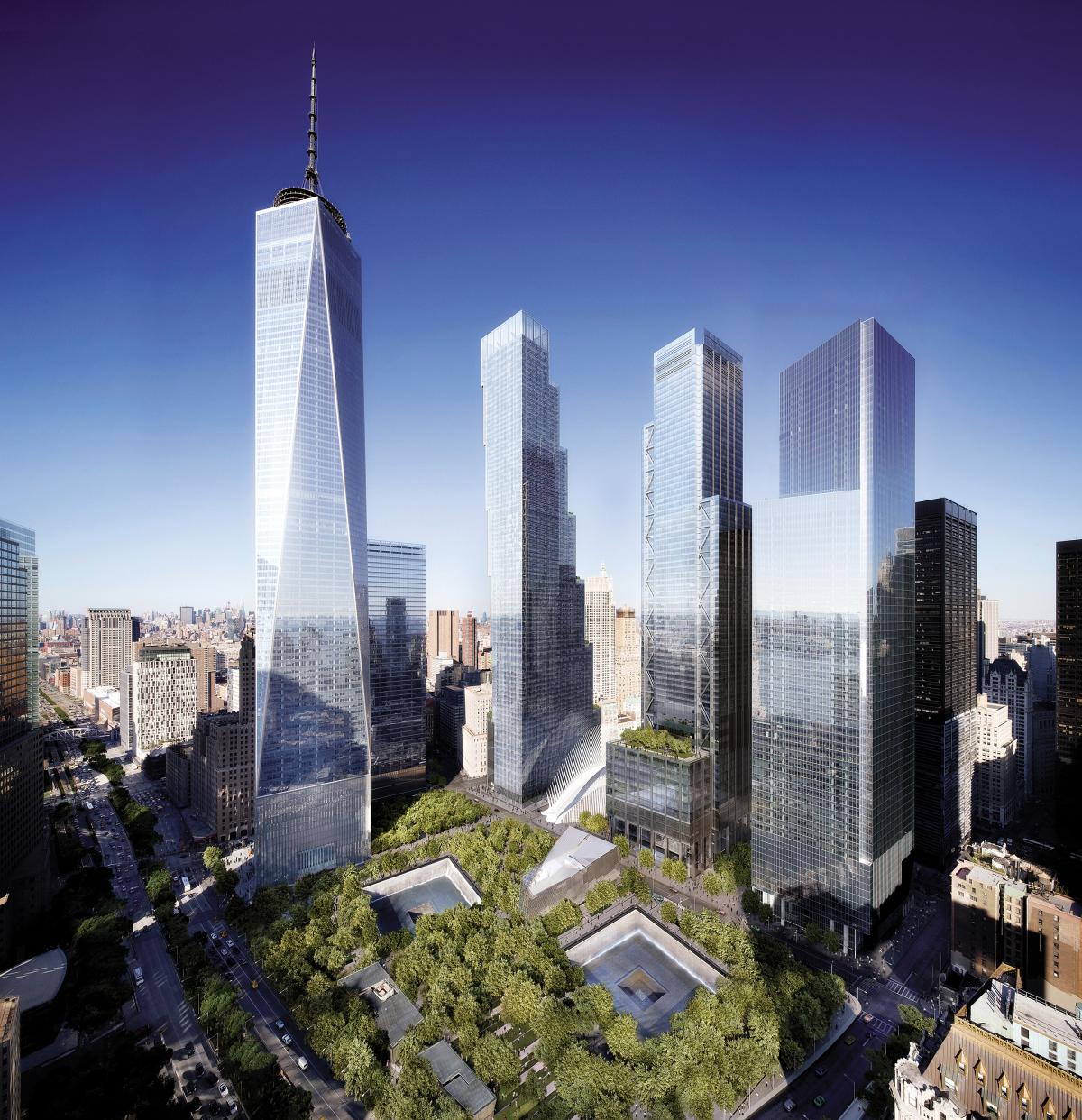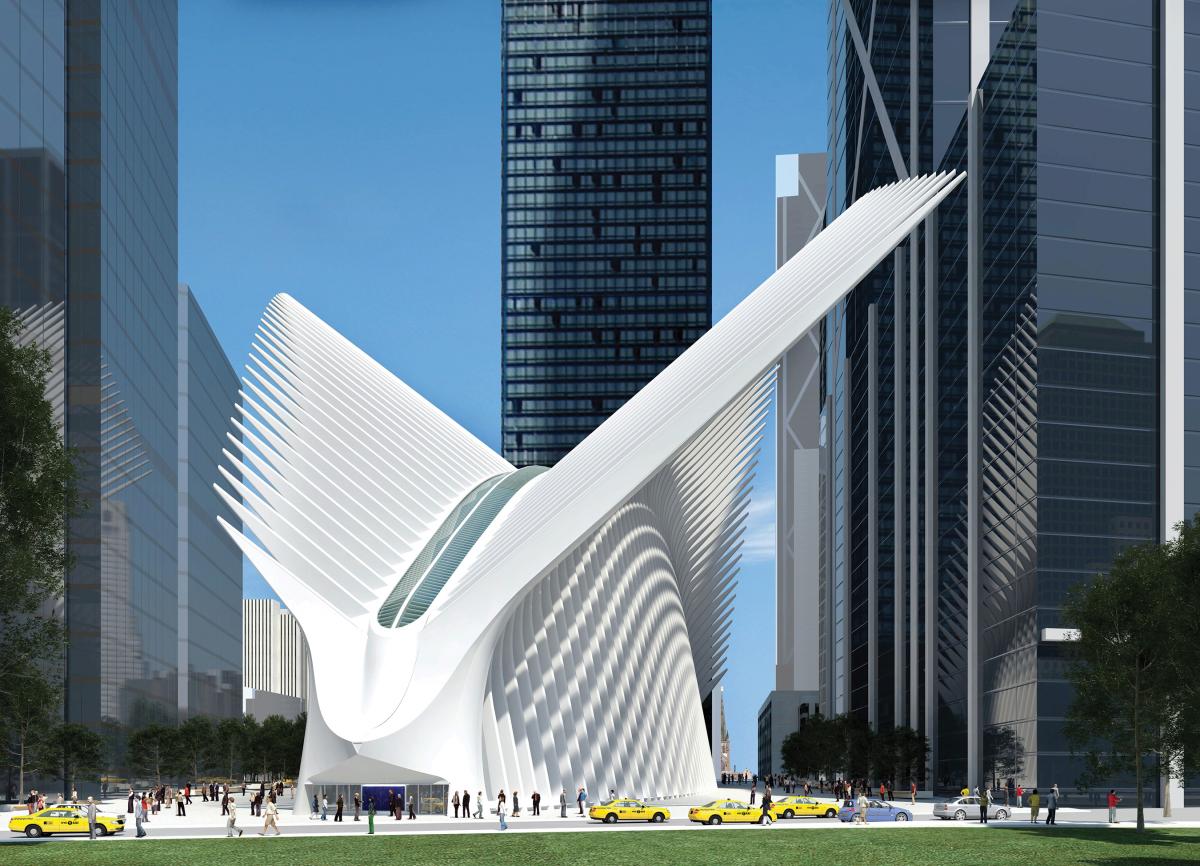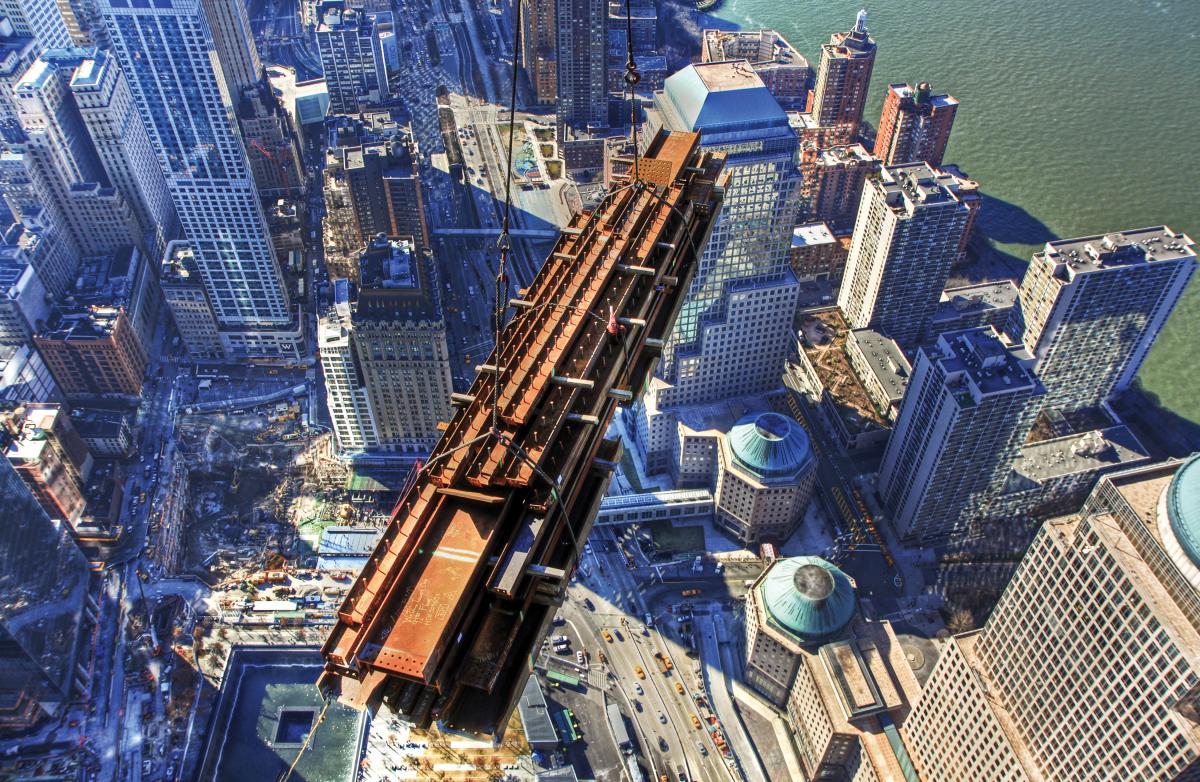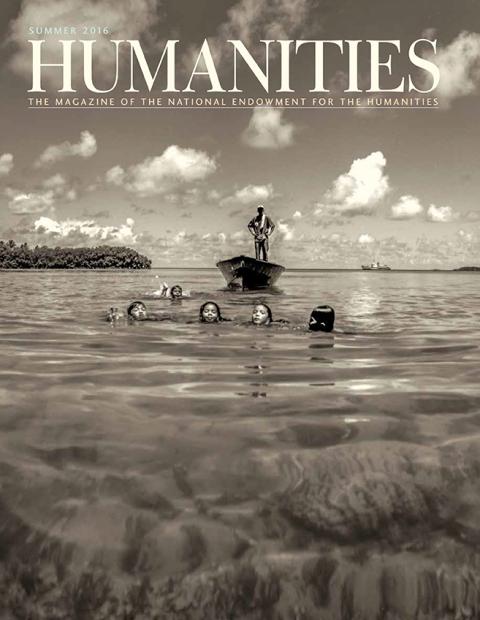“Turn around. I have you in my crosshairs,” says Judith Dupré via cell phone as I wait for her at the corner of Greenwich and Liberty in Lower Manhattan. Now I see her coming, smile first, a large shopping bag on her arm, well-dressed but casual. Her mouth opens and I hear New York, not so much in the accent as in the directness that, as a kid from Queens, I find comfortingly familiar.
“I am a scholar but I have the common touch,” she says not long into our first conversation. I have to wonder whether anyone with the common touch even uses that phrase anymore, but in Dupré’s case it’s more or less true.
She holds a master’s of divinity from Yale and has completed a string of research projects, aided by grants and fellowships. She is also the author of picture books, well-researched, fact-filled, photographically rich, “illustrated histories,” she calls them at one point, for the tourist and connoisseur alike. One of these, Churches, was a New York Times bestseller. Another, Skyscrapers, thin and tall like its subjects, is very popular and has been updated and reprinted several times.
Throughout her work, text and image share equal billing, as they should when you are writing about the built environment in the age of color printing. Her books are a more sophisticated relative of the large-format nonfiction titles that are marketed to children or designed for coffee-table display.
In the language of NEH grantmaking, Dupré is a “public scholar,” which is also the name of a new program of research grants aimed at academics who write for the public and professional writers who favor scholarly methods of research. Dupré might be considered either.
She is also a hands-on promoter. After inviting me for a Cook’s tour of the new One World Trade Center, the subject of her NEH-supported book of the same name, she lets me know one day prior that a television documentary crew will be following us. And there they are, a few paces behind, producer, cameraman, and Phil the sound guy, who is quickly running a mic through the belt holes of my pants and up my shirt.
On September 11, 2001, terrorist-hijacked commercial airplanes crashed into and destroyed the famous Twin Towers at 1 and 2 World Trade Center. They also destroyed 7 World Trade Center and fatally damaged four other buildings within the complex, leading to their eventual demolition. Almost immediately after the attacks, Mayor Rudy Giuliani declared, “We are going to rebuild,” but it was not at all clear who “we” was. Every square inch of land at Ground Zero was subject to multiple claims of ownership, jurisdiction, and oversight.
Two months earlier, the Port Authority of New York & New Jersey had leased the properties to real estate developer Larry Silverstein. Fires amid the rubble of the old World Trade Center continued to burn throughout the fall of 2001, while the site of the attack, essentially a hole in the ground surrounded by metal fencing, drew hordes of interested visitors. Meanwhile, the Lower Manhattan Development Corporation was founded, and New York State Governor George Pataki decided the Port Authority would be in charge of rebuilding. Come January 2002, Mayor Giuliani was leaving office, and plans for different aspects of the rebuilding effort came to the fore amidst a maelstrom of hot public concern. All too quickly for some people, Silverstein announced his intentions to rebuild, while drafts and concepts for master plans and memorials were published in newspapers, magazines, and on the Internet. And that was just the beginning.
The intensity of feeling surrounding the project was but one of many challenges. The Hudson River flows only a few blocks west of what eventually became the construction site. The Number 1 subway line and four PATH trains from New Jersey run underground. And, of course, post–9/11 security concerns raised the bar significantly on how landmark skyscrapers, especially ones that symbolize the soaring American spirit, are to be built and kept safe.
Hard to build, hard to describe, but finally a sight to behold, the new World Trade Center consists, so far, of three completed buildings, a memorial, a museum, and a transportation hub, with at least a couple more skyscrapers to come. Although built on a more human scale and according to a gentler, more pedestrian-friendly aesthetic, the complex doesn’t lend itself easily to character-driven storytelling. The cast is too large (26,000 people have worked on these buildings), and the action is, by literary standards, slow, diffuse, and, 15 years later, still incomplete, as work on building 3 continues and the design of 2 is not yet settled. But this saga of glass, steel, and concrete does offer a unity of place, to use the Aristotelian term, and Dupré and I are smack in the middle of it.
Our first stop is the lobby of 4 World Trade Center, where the TV producer just negotiated permission for his camera and sound to enter. Within seconds they are evicted. “No cameras,” says a large man with rueful conviction. Apparently, he’s the one who had given them permission not two minutes ago. I too begin to leave when Dupré points out that she and I are free to stay and continues with her tutorial.
The building belongs to Silverstein, who is an important landlord in the story of the World Trade Center and, not incidentally, a lover of contemporary art. Delicate, precise music by Philip Glass plays in the lobby as Dupré directs my eyes from the fine-grained black marble of the lobby proper to the warm egg-yolk-colored wood of the three elevator banks, which terminate in video installations of, respectively, a path in the woods, a waterfall, and a blue sky. Running my eyes over the space, I notice how the heavy sheen of man-made elegance encloses, then gives way to, the pastoral elements.
All day long I see things like this, human contrivance presenting, with a magician’s wave of the hand, images of unspoiled nature. I see it next on 7 World Trade Center and One World Trade Center, as the sky, an infinity of blue dabbed with toothpaste smudges of white cloud, floats silently across their glass surfaces.
Leaving 4 World Trade Center, I follow my subject out the revolving doors, this historic moment captured by our waiting camera crew. Dupré tells me about the entrance to 7 World Trade Center, another gorgeous proscenium of tiled glass, this one supported from within by a crisscross of steel cables that would enable the grid to absorb the shock of an explosion and, like the strings of a racket meeting a tennis ball, send it back the way it came. This building also belongs to Silverstein, about whom many doubts were expressed in the press but who has emerged as an important catalyst of the new downtown.
Seven, the first of the trade center buildings to be rebuilt and a prototype for One World Trade Center, is celebrated for its thoughtful design and management. Slim, rectangular, and 52 floors high, its modest size allowed Greenwich Street, which had vanished to make way for the Twin Towers, to be restored. Tenants are billed separately for energy use, encouraging economy. The roof collects rainwater. The security incorporates art and not as an add-on: The beautiful wall of glass behind the front desk serves as a reading pane for a projected loop of quotations about New York City, installed by the artist Jenny Holzer; in the case of an attack, the wall would protect the base of the building’s elevator system. Dupré tells me all this and more, adding, “Don’t worry, it’s all in the book.”
Dupré the docent lets no detail escape our notice, yet Dupré the author bears a strong preference for the quintessential and the iconic, as indicated by the definition-proposing titles of her books: Churches, Bridges, Skyscrapers, Monuments, those last two providing most of the credentials she needed to become, as she puts it, “the official biographer of One World Trade Center.”
Cameras rolling, our next stop is Oculus, which at street level is a lapel-grabbing sculpture by Spanish architect Santiago Calatrava, whose provocative design is based on a winged dove but tempts its critics with mental flashes of dinosaur skeletons and Pokémon figures. From inside the train station, and on the floor of the main hall 160 feet below, the rib-like struts and buttresses articulate a beautiful space-fantasy cathedral, dedicated perhaps to the god of sunlight.
Oculus is a public building. Instead of Phillip Glass, you hear the sound of commerce as construction workers build out spaces for Banana Republic and a new Apple store. While critics bark about the project’s enormous cost overruns, delighted tourists lie on the white marble floor taking pictures. Ever sensitive to sightlines, Dupré has me stand in the center of the hall and look upward to spy the looming tower of One World Trade Center framed through the retracting window running down the middle of the roof.
ONE WORLD TRADE CENTER, Dupré’s book, is structured like a magazine feature. Chapters alternate with stand-alone passages, sidebars, timelines, infographics; photography tells a very large part of the story while pull quotes and captions add emphasis and digress on fascinating details. Some of the book’s best writing is found outside the main text.
“There are piles of strange loveliness,” Dupré writes in the margin of the building chapter, “slabs of sheetrock, wooden spools of red and blue wire, plastic buckets, cinder blocks. Some pieces are spray-painted ‘Save.’ Dense hieroglyphics—the signatures, thoughts, and drawings of those lucky enough to be inside with a few minutes and a Sharpie—cover the walls. One reads,‘Te Amo Tres Metros Sobre el Cielo,’ meaning, ‘I love you three meters above heaven.’”
A reader can easily miss how much research is on the page. The source index lists 70 interviews (excerpts soon to be posted on Dupré’s website) and ten pages of endnotes documenting how integral such material was to the writing. One can imagine different books written about the same events, but it would be hard to envision another book taking more seriously the construction of One World Trade Center as the consummation of so many trades, so many technical innovations, and so much politics all at the same time.
Over sandwiches at the esplanade, Dupré tells me how she became the “official biographer.” The obstacles to writing about the World Trade Center from the point of view of its owners, designers, and builders were formidable. The Port Authority of New York & New Jersey not only controlled the land but also the information. And surrounding its bureaucratic fortress was a defensive line of nondisclosure agreements signed by the project’s many contractors.
Dupré began by approaching contacts at the architectural firm Skidmore, Owings & Merrill, which had designed 7 and would design One World Trade Center. This was during the short-lived governorship of Eliot Spitzer, and the response she received was discouraging. The Port Authority, Dupré learned, was extremely wary of any proposals that might smack of profiteering. But Dupré did not let go of the idea.
She had lived in Lower Manhattan for some two decades, from the 1970s to the 1990s, and was, like a lot of New Yorkers and Americans in general, forever changed by the two planes that flew into the World Trade Center. She remembers hearing the news on the radio, taking her sons out of school, and later that day walking down to the shore in Mamaroneck, New York, to try to see the Manhattan skyline and confirm with her own eyes that the Twin Towers, impossible as it seemed, were gone.
In 2010, Andrew Cuomo was elected governor of New York and, in 2011, he appointed Patrick J. Foye as the new executive director of the Port Authority. Dupré was paying attention. She knew Foye from his days as a lead attorney for mergers and acquisitions at Skadden, Arps. It seemed even more obvious than before that the Port Authority needed someone to tell the story from September 12 to the present day. Dupré saw Foye at a social gathering, mentioned the idea, and followed up with a formal proposal.
Yes, came the answer, but it wasn’t easy. A lengthy contract resulted, granting Dupré access to Port Authority vendors and facilitating her access to records but granting the Port Authority a window onto her research. In practice, Dupré says, the Port Authority had no way of knowing what materials she’d finally use. The Port Authority also previewed the manuscript for security concerns but had no editorial say. And, during the research for the book, Dupré was assigned a “minder,” as she puts it, from Port Authority’s media relations staff. The minder, whose name is Rudy King, accompanied her on work sites and to all her interviews.
“Rudy’s job was to scowl,” says Dupré. Eventually, however, they became friends.
King, it turned out, was more than a little interested in Dupré’s project. On the morning of September 11, 2001, he was in Sky Lobby of Tower 1 when the first plane hit. For years he was haunted by flashbacks and panic attacks. After Dupré’s book came out, he wrote about what it was like to work on this project about rebuilding after 9/11. In a touching essay for the Port Authority’s blog, he described the experience as ultimately liberating, helping to release him from pain that had been following him these last 15 years.
“No one,” says Dupré, “is prouder than Rudy of this book.”
ACROPHOBIA IS A FEAR OF HEIGHTS. I suffer from a mild case of it. A physician’s assistant had prescribed for me some antianxiety medication, which I decided not to take lest it interfere with my ability to ask questions and record information for this article.
After taking our leave of the television crew and the Port Authority representatives who kindly showed us around the Oculus, Judith and I make our way over to One, which opened in late 2014. I am sorry to give up my mic. It and the cameras were a helpful distraction.
The elevator ride to the observation deck, 1,300 feet above street level, takes only 47 seconds. While the car is cruising upward, the walls of the elevator function as video screens and place you inside a time-shifting diorama of natural history in Manhattan. The only part I don’t like is when the video catches up to recent history and shows the building you are in but under construction: rebar, I-beams, a work site.
Before I can begin hyperventilating, the car stops and the doors open onto a part of the building that looks very much finished. Floor carpeted, walls painted, ceiling intact. And none of my fellow tourists are freaking out.
If that lady over there can do this, I tell myself, so can I. If that kid can do this, so can I. If that old guy over there can do this, so can I. Thus do I ease my way onto the observation deck trying to follow Judith Dupré as she walks around to ask the young woman managing the gift shop how her book is selling this week.
To look out on the island of Manhattan from this height, to see Queens across the water, and next to it Brooklyn, and across the water, New Jersey, is, it turns out, exhilarating. The weather is wonderfully clear, and as Judith helps me identify landmarks, I am nervous but amazed.
What happened on 9/11 is officially verboten on the observation deck, which is managed, as a concession, by a sports-entertainment company. An ongoing presentation for tourists, listing numerous factoids about New York City, delivered by an “ambassador” with the aid of a large ring of video screens, does not include an account of the hijacked planes and the buildings that came down, those defeated giants whose footprints you can see below in the 9/11 memorial pools designed by Michael Arad. But airplanes and terrorists are never far from my mind while standing on the observation deck. They actually help direct my thoughts.
One World Trade Center, 1,776 feet tall, is a defiant restatement of American ambition. It is bold and glamorous and beautiful. The battlefield of 9/11, in the air above Lower Manhattan, has been reclaimed. No Icarus-type regrets. No apologies for hubris. The nation of the Wright Brothers has taken back the sky.
Judith, increasingly aware of my dilemma, motions for us to leave and we head to the elevators, but I am not quite ready. Though my knees are trembling ever so slightly, I need to stay a little longer. Of course, says my guide. So we walk back to the observation deck and take another couple of laps around the city.

